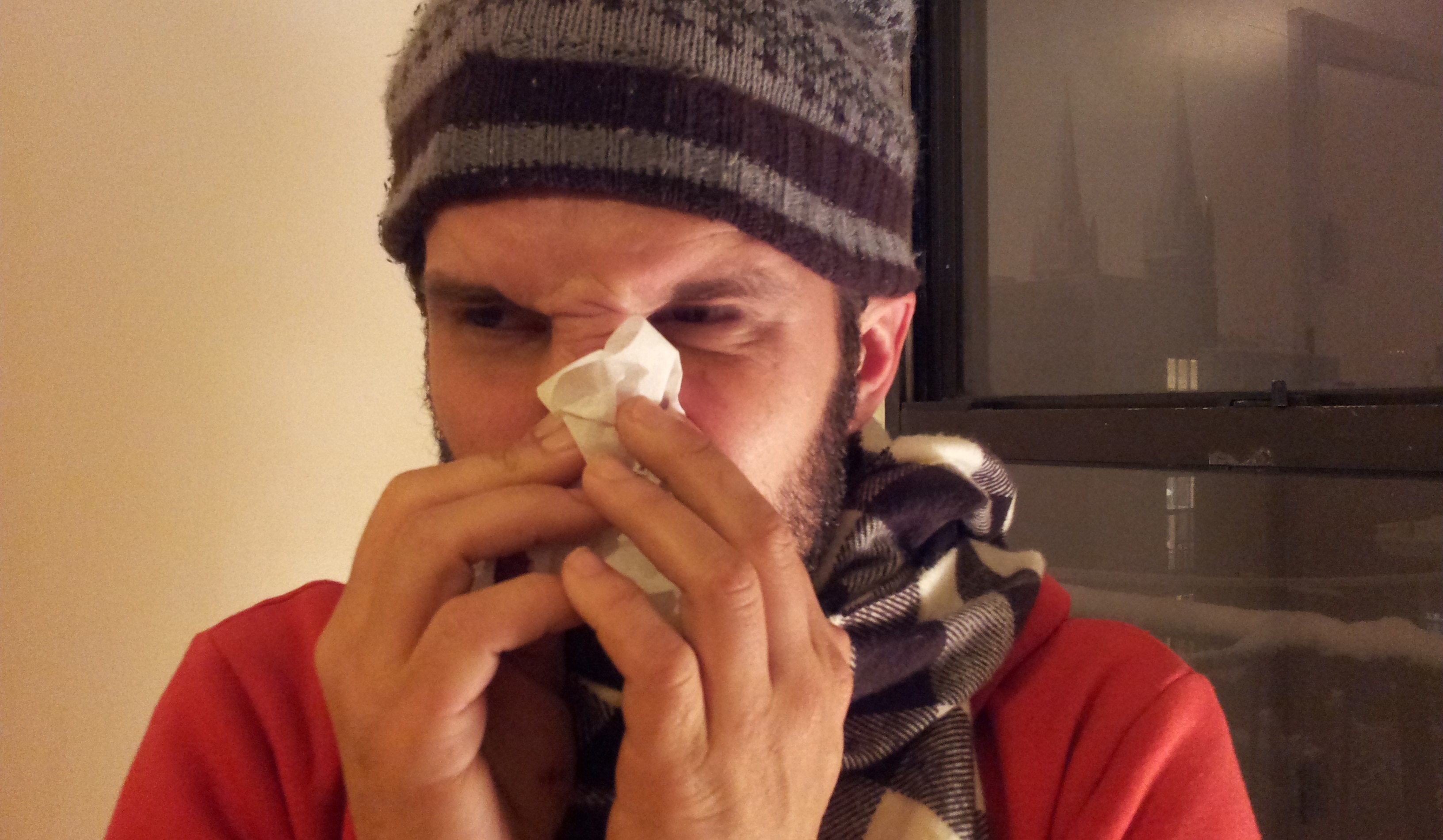Cold, allergy, what’s the difference? Either way you’re drowning in snot
Non-drowsy relief for your inflammatory confusion
Nick Stockton • May 24, 2013

Your allergies might feel just like a cold, but there's more to a virus than snot [Image credit: Nick Stockton]
Your eyes are swollen. Your nostrils are drooling. Your head feels like there’s a pillow stuffed inside of it, and your mouth is dry and scratchy, like you’ve been gargling kitty litter. For most of us, those symptoms add up to one of two options: allergies or a cold. So how can pollen elicit the same symptoms as a cold virus? Are colds and allergies related?
The answer is: not directly. Despite the similar ways they make you feel, cold viruses and allergic rhinitis, or hay fever, pose different threats and attack your body in different ways. Hay fever is caused by pollinating plants. With each breath, you suck up grains by the thousands. Viruses can’t move or replicate on their own, but they are brutally efficient at hijacking their host’s DNA to reproduce. What you feel is your body using the same strategy to deal with both.
“It’s a miscommunication,” says Dr. Andrew Smith, a Cincinnati allergist. When the offending ragweed spore or viral strand makes contact with sensitive respiratory tissue, your body tries to isolate the affected area and flood it with healing agents. Broadly, an allergic response is almost analogous to a cold. You’ll feel this as inflammation – the puffy, red and warm sensation of the affected area. Cells infected with the virus or touching the pollen are killed, and your body sloughs off the infected tissue and evacuates it through your saliva and snot. “What the body is trying to do is expel that threat,” says Smith. You feel the generic response: dash of sore throat, hint of nausea, and about three cups of mucus pouring out of your face.
The specific processes, however, are unique. When your immune system detects a cold virus, it tends to respond with a preemptive strike. As soon as the virus binds to your DNA, your body responds by releasing chemicals called mediators that open up the blood vessels. This increases the relative temperature in the area, and allows it to be flooded with antibodies. Antibodies are too large to attack viruses directly, so instead they destroy cells that the virus has infected. The mediators also encourage mucus to flow, which flushes the dead cells out of the body.
Allergic responses are a bit different. They begin when pollen or some other allergen enters your mouth or nose. Antibodies called immunoglobulin E, sensitive to proteins in the pollen, react by binding to receptors on specialized mast cells. When this happens, the mast cells release inflammatory mediators, in particular, histamine. This little compound is very good at its job, which is why so many allergy medications target it. Unless the allergic response is suppressed with anti-histamines, it will continue until your body gets rid of the pollen.
So how do you tell one from the other? One way is to blow your nose. “If you look a little more closely at the fluids coming out of the nose of someone with the cold and someone affected by ragweed,” says Dr. Kirk Druey of the National Institute of Allergy and Infectious Diseases, “[the colors] would be completely different.” A wad of mucus from a cold will usually be yellow. Allergy snot tends to be clear.
Typically, a cold won’t last quite as long as allergies either. Colds tend to max out at around one week. Hay fever, however, will persist as long as the pollen is in the air. Ragweed, one of the most common allergens, will pollinate for up to two months. Finally, allergies cause itchiness and watery eyes, rare symptoms from a cold.
Seasonal allergic reactions caused unnecessary discomfort for over 25 million Americans last year. Meanwhile, the U.S. sees over a billion colds (most people catch more than one). Is your body overreacting to allergies and colds? Perhaps not: Consider that in a person whose immune system is weak – because of AIDS, for instance – a cold can kill.
“The virus only causes pin pricks of damage,” says Ronald Eccles, director of the Common Cold Centre at the University of Cardiff in Wales. But, he adds, if allowed to proliferate, these pin pricks can cause serious damage, such as bronchiolitis – an infection of the smallest pathways leading into the lungs.
Your body is a tenacious, if sometimes overzealous, defender against disease. So the next time you wake up with a face full of first responders, try to think of it as a necessary drill.
1 Comment
I WILL FACED COLD FROM 2 MONTHS,HOW CAN I DO.